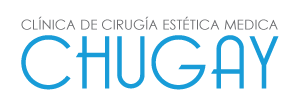What is the Goal of Facial Liposculpture?
Facial Liposculpture is a very common and effective process used to reduce or change the appearance or size of the face and neck. The most common areas include: under the chin, the cheeks and the jowls, along with the back and front of the neck.
Most frequently the goal is to reduce the appearance of a double or triple chin. This procedure is fairly easy to perform, and it usually yields excellent results. It is often combined with Chin Augmentation.
The cheek area is a challenging area of the body on which to perform liposuction. Reducing too much fat will result in a sunken-cheek appearance later in life. Reducing too little will not produce noticeable improvement. Furthermore, any facial liposuction, unless performed by a very skilled and experienced surgeon, will result in an uneven or “bumpy skin” appearance.
Reducing fat from the front, sides and back of the neck is usually very effective to reduce the appearance of a thick neck.
*INDIVIDUAL RESULTS WILL VARY.
Is Financing Available?
Yes! Medical Financing is available on approved credit. We accept financing from CareCredit.com. For more information about our Financing options
What are the Risks of Facial Liposuction?
- Uneven or bumpy skin
- Sunken cheeks
- Aged skin appearance
How does Dr. Chugay Avoid the Risks?
The risks of the procedure remain; but, Dr. Chugay is able to minimize the chances of complications and a poor result with good technique. The uneven or bumpy skin can be avoided by Dr. Chugay’s unique methodology which allows for more fat to be reduced without creating bumps or troughs under the skin. To help minimize poor outcomes, Dr. Chugay uses the following tools:
- SPECIAL TUMESCENT TECHNIQUE
- EXTERNAL ULTRASOUND
- SPECIAL INCISIONS
- UNIQUE CANNULAS
Sunken cheeks and aged skin appearance can usually be prevented if Facial Liposuction is not done too aggressively. Leaving some fat in the cheek and face area will leave the skin looking youthful and vibrant. The trick is moderation and good technique. Strategical placement of Cheek Implants can also be of help.
Things to Look for In your Surgeon:
- Experience: With 2 generations of doctors, over 30,000 procedures and a lifetimes worth of combined experience, Dr. Nikolas V. Chugay and Dr. Paul N. Chugay have not only the required experience in various surgical and non surgical procedures but Nikolas has helped revolutionize the industry, and Paul is following very closely in his father’s footsteps, drawing on over 40 years of experience.
- Compatibility & Respect: Book a consultation with the doctor. Get a feel for how they treat you; whether they listen to you and what you want. It’s important to thoroughly discuss what you’re trying to achieve with your doctor so they have a clear, concise idea of what your goal is but it’s equally important that you respect your doctor’s experience and education enough to listen to their recommendations. You don’t want a doctor that doesn’t care about YOU.
- Specialization: Ask your doctor about other times they’ve performed the procedure you want.
Facelifts and Facial Liposuction
Sometimes a Facelift can be accompanied by Facial Liposuction. This practice will often produce good short-term results; however with aging, the skin will look very old and stretched. This is because very little fat is left under the skin. With each Facelift, the skin will have less and less under-the skin fat. Reducing more fat with liposuction is a recipe for disaster. Again, the trick is balance and artistry. Dr. Chugay will discuss the best options with you during your consultation.
Risks Involved
Facial liposculpture surgery is not without its risks. The potential risks include but are not limited to: infection, bleeding, nerve injury, deformity of the cheek, need for further surgery.
After your Surgery
Following the surgery, there will be swelling and bruising in the affected areas. The face may have puffy appearance post-operatively, but that will decrease with time. There may be some drainage noted from the incision sites; however, this will decrease as the wound heals and closes.

